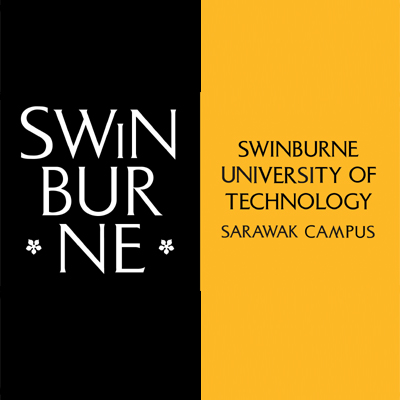
Robots are computer-controlled mechatronic devices, which have been used to assist humans in various tasks. While the majority of robots have been used in manufacturing, a recent trend has seen robots used in a variety of applications including space and underwater exploration, medicine and a wide range of service industries. The discipline of robotics embraces the design and operation of these devices and their integration with other systems in the work environment.
Mechatronics Engineering integrates three traditional engineering disciplines – Mechanical, Electronics and Software. Mechatronic engineers design and develop diverse systems used in a range of industries including manufacturing, medicine and the service industries. Examples of mechatronic systems include aircraft, whitegoods, automobiles, automated plant and robots.
This course produces students who can use their multidisciplinary skills to meet growing demand from an industry that is pushing the limits of technology by exploiting the growing convergence of these fields.
Swinburne also offers double degrees in Bachelor of Engineering (Robotics and Mechatronics)/Bachelor of Computer Science.
The following six objectives are the typical skills and abilities that Swinburne graduates will have a few years after graduation as they develop their professional engineer careers.
At the completion of the Bachelor of Engineering (Robotics and Mechatronics) course, graduates should be able to demonstrate the attainment of the following Robotics and Mechatronics Swinburne Engineering Competencies, required for external professional recognition:
Foundation studies units
Technical studies units
Advanced Engineering units
Management and Business studies units
Compulsory non-credit units
Specialist elective studies
Students studying on an international student visa must complete Professional Experience in Engineering (HED400). All other students may complete an Industry-Based Learning placement instead (exemption will be granted for HED400 on completion of IBL).
Professional Experience in Engineering (HED400): Equivalent of 12 full time weeks of approved relevant engineering practical experience (0 credit points, 0 fees). To be taken at any stage during the degree.
Industry-Based Learning (Placement 1) (HEW050), Industry-Based Learning (Placement 2) (HEW055): Full time paid placement in industry for 6 (HEW050) or 12 months (HEW050 & HEW055) in an area relevant to your studies (0 academic credit points, unit fees apply). Students should attend an information session one semester prior to the scheduled IBL entry point.
Swinburne offers International Exchange Programs as well as other Education Abroad Programs to help internationalise your degree. International Exchange is an academic program allowing you to study at a Swinburne Partner Institution for one or two semesters during your degree. Swinburne’s Partner Institutions offer many relevant subjects as well as a secure base to explore a different culture. Your studies whilst on exchange can be credited towards your Swinburne degree, provided they are relevant and approved by Swinburne. For further information visit the Swinburne Abroad website.
Graduates can take up careers in a wide spectrum of industries including robotics, airlines, chemical industries, automotive, appliance manufacturing and industrial research. Contributions can be made to these industries in a variety of roles including design engineer, project planner, product designer and project manager.
This course has also been professionally accredited by the Engineering Accreditation Council (EAC) Malaysia and Engineers Australia.
Graduates are eligible to apply for membership of Engineers Australia as well as Graduate Membership of Board of Engineers Malaysia.
| Level of study | Foundation and Diploma | Undergraduate | Postgraduate |
|---|---|---|---|
| IELTS | 5.5 (no individual band below 5.0) | 6.0 (no individual band below 6.0) | 6.5 (no individual band below 6.0) # 7.0 (no individual band below 6.5) |
| TOEFL (Paper based) a (Internet based)b |
527 |
550 |
575 |
| SPM * | B | – | – |
| UEC ** | A2 | A2 | – |
| MUET *** | 4 | 4 | – |
| GCE ‘O’ and ‘A’ Level | Score of ‘C’ or better for ‘O’ level English**** | Score of ‘C’ or better for ‘A’ level English | – |
| International Baccalaureate | Minimum of 4 in English A1 or A2 (Higher and Standard Levels) or Minimum of 5 in English B (Higher Level) | – | |
| * | Students with a C+ or C English grade are required to enter the Intensive English program at UIIE; students with a D or E English grade are required to sit the Swinburne Sarawak English Placement Test to determine the level of Intensive English program they must enter |
| ** | Students with B3 to B6 English grades are required to sit the Swinburne Sarawak English Placement Test to determine whether they require additional English classes |
| *** | Students who obtain band 1 to 3 in MUET are required to sit the Swinburne Sarawak English Placement Test to determine whether they require additional English classes |
| **** | Not applicable for “English as Second Language” |
| a | Foundation and diploma programs – minimum Test of Written English [TWE] score of 4.5 Undergraduate programs – minimum Test of Written English [TWE] score of 5.0 Postgraduate programs – minimum Test of Written English (TWE) score of 5.0 |
| b | Foundation and diploma programs – with no band less than 18 Undergraduate programs – with no band less than 20 Postgraduate programs – with no band less than 20 |
| # | Entry requirement for Master of Arts (TESOL) |
Source : SwinBurne University Of Technology